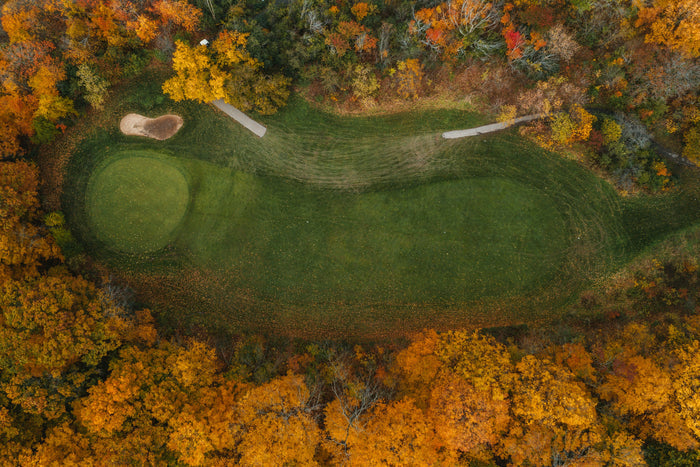

Where you live determines everything about your golf season's length. Golfers in Minnesota or Wisconsin know they're done playing by early November once the snow starts flying and everything freezes over. Meanwhile, if you're swinging clubs in Florida or South Carolina, you've got the luxury of playing through the entire year - though you'll want those early morning tee times to beat the brutal summer humidity. Arizona's desert courses hit their stride between January and March, but mountain courses typically shut down from November until February. Let's dig into how USGA handicap rules and local economics affect when your home course closes its doors.
How Your Local Weather Patterns Control Playing Time
Geography's either your best buddy or your biggest obstacle when you're trying to squeeze in those last rounds. The climate where you live controls when your local courses open their gates and when they ultimately call it quits.
Check this out: if you're near the coast in Florida or California, you're looking at 300-plus days of golf because it barely ever freezes. That's the dream! But mountain golfers deal with completely different challenges - heavy snow and late melts mean you're stuck playing from March to November, and sometimes the season ends suddenly in mid-November no matter what the weather's doing.
Desert golf presents its own quirks: you'll play through mild winters well into late fall, but those blazing summers mean you'd better love sunrise tee times. Arizona golfers know their sweet spot hits between January and March when it's actually comfortable to walk 18 holes. Areas with changing weather patterns get a mix of conditions, usually running March through November with ideal play during spring and fall months.
Northeast golfers typically see courses opening in late April, which helps everyone plan their season and get their equipment ready at the right time.
Northern Golf: When Winter Shuts Everything Down
If you're golfing up north, winter doesn't just slow things down - it completely stops play. Most courses lock their gates by early November once snow starts sticking and everything freezes solid. Minnesota and Wisconsin golfers know there's no messing around when winter arrives.
What's wild is how fast everything changes in late October. You'll notice your home course cutting back on staff and shortening hours right before they close completely. They're not overreacting - they've got to protect their greens and equipment from the harsh weather that's coming.
During the shutdown, maintenance crews winterize everything and tackle major renovations. You've got options though - some players hit up indoor simulators or head south for golf trips. Smart golfers use the downtime to service their clubs and snag early bird deals for next season. Once you start seeing frost delays regularly, you know it's almost over and winter's taking charge. Each state's golf association makes the official call on when the inactive period starts, making sure every club follows the same schedule.
Southern Golf: Playing Through Most (or All) of the Yea

Southern golfers have it made while their northern friends are shoveling driveways - you're playing golf from February straight through November, sometimes even longer! In South Carolina, Georgia, and Florida, you can literally play on New Year's Day if you want. Yeah, July and August turn into steam baths with that infamous humidity, but dedicated players still get out there. Your best golf happens during spring (March through June) and fall (September through November) when conditions are ideal. Plus, you'll save serious money with winter rates running from mid-November to February. South Carolina alone has more than 350 courses, so you'll always find somewhere to play - just trade your winter gear for plenty of sunscreen! Coastal areas often see 60-degree days in January, making winter rounds surprisingly enjoyable. Knowing how tough each course plays helps you pick the right spots for your skill level during these long playing seasons.
USGA Handicap Posting: When Your Scores Actually Count
Your handicap posting schedule follows strict rules based on where you play - there's an official window when those scores matter for your index!
Your zip code controls everything here. Golfers in Alaska, Minnesota, and Wisconsin stop posting scores on October 31, but if you're in Colorado, Maryland, or Massachusetts, you've got until November 14. Living in Arizona or Texas? You're posting scores all year long!
Starting dates aren't uniform either. Idaho and Indiana players begin posting March 1, but Connecticut and Massachusetts wait until April 1. Pennsylvania golfers start on April Fool's Day and keep going through November 14 according to the Golf Association of Philadelphia's rules.
This setup keeps your handicap accurate by only counting scores when courses maintain proper playing conditions.
Frequently Asked Questions
Can You Play When the Course Freezes?
Playing on frozen ground is possible, but you've got to be careful! Once the soil temperature hits 32°F or below, your footprints and cart tracks will damage the grass. That's why many courses set up temporary winter greens to save the real ones. If the ground's frozen deeper than 3 inches, you'll probably face playing restrictions. Always call the pro shop first - they'll let you know what's playable and safe.
What Should You Wear for Cold-Weather Rounds?
Smart layering makes all the difference for late-season golf! Throw on thermal base layers initially, then top it with a water-resistant jacket that lets you swing freely. Insulated golf pants will keep your legs comfortable, and waterproof shoes with solid traction handle wet fairways. Bring warm gloves, a thermal beanie, and hand warmers for waiting between shots. Actually, pack extra gloves - cold ones get slippery quickly!
How Can You Keep Your Game Sharp During Winter?
Indoor ranges and fitness training will save your swing during the off-season. Work on your technique at simulator facilities and use swing apps to spot problems. Stay golf-fit with bodyweight workouts, Swiss ball balance drills, and yoga stretches. Mental practice matters too - visualize your shots and study course strategies. Building strength and cardio now means more distance when spring arrives!
Where Can You Find Winter Golf Simulators?
Most urban areas and cold-weather regions have plenty of simulator options these days. Golf centers, sports facilities, and entertainment venues often feature high-tech simulators with swing analysis and virtual courses. Cities usually offer more choices, and northern locations see huge demand during winter for obvious reasons - everyone's trying to keep their game alive!
Conclusion
When your season ends completely depends on your home turf! Northern golfers usually pack it in by late October once it drops below 40°F consistently. Southern players might keep going through December or never stop playing at all. Stay on top of your local course announcements and USGA posting dates so you're not caught off guard. Even after your course closes, there's nothing stopping you from rolling putts on your living room carpet!







